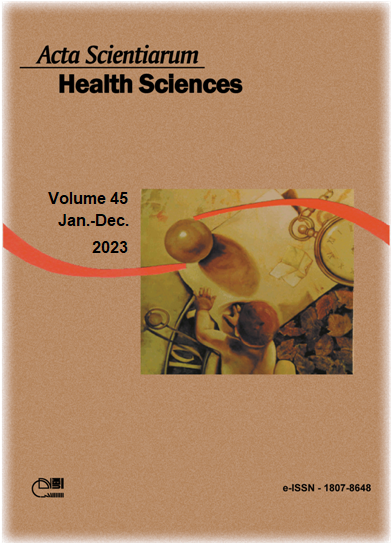Singlet oxygen release due to different concentrations of photosensitizer
Abstract
Photodynamic therapy is a technique that consists of activating a Photosensitizing Agent (PS) to form reactive oxygen species, which are important for antimicrobial action. This research aimed to carry out laboratory tests to measure singlet oxygenand superoxide radicals release as a function of different formulations and concentrations of methylene blue (MB), eosin Y (EY) and fluorescein (FL) dyes, and to compare their photodynamic efficiency. Solutions containing these compounds in a MIX solvent (glycerol, ethanol and water) irradiated with low power laser (λ= 660 nm) were analyzed. The production of singlet oxygen (1O2) was photometrically evaluated through the consumption rate of 1-3 diphenylisobenzofuran (DPBF), a 1O2 sequestering substance. Statistical analyses applied were the ANOVA and Duncan's complementary test using the Statistical Package for Social Sciences (SPSS) software. MB had greater photodynamic activity, as it presented higher values for the decrease in DPBF for the three concentrations evaluated. The mean concentration was 89.9% at 150 µM, 87.6% and 2.9 at 15 µM, and 77.3% and 2.5 at 1.5 µM. EY and FL presented similar results, with no significant difference between the concentrations. The MB at 150 µM expressed greater production of 1O2, which suggests a greater antimicrobial effect and highlights its relevancecompared to the other dyes.
Downloads
DECLARATION OF ORIGINALITY AND COPYRIGHTS
I Declare that current article is original and has not been submitted for publication, in part or in whole, to any other national or international journal.
The copyrights belong exclusively to the authors. Published content is licensed under Creative Commons Attribution 4.0 (CC BY 4.0) guidelines, which allows sharing (copy and distribution of the material in any medium or format) and adaptation (remix, transform, and build upon the material) for any purpose, even commercially, under the terms of attribution.
Read this link for further information on how to use CC BY 4.0 properly.























5.png)







